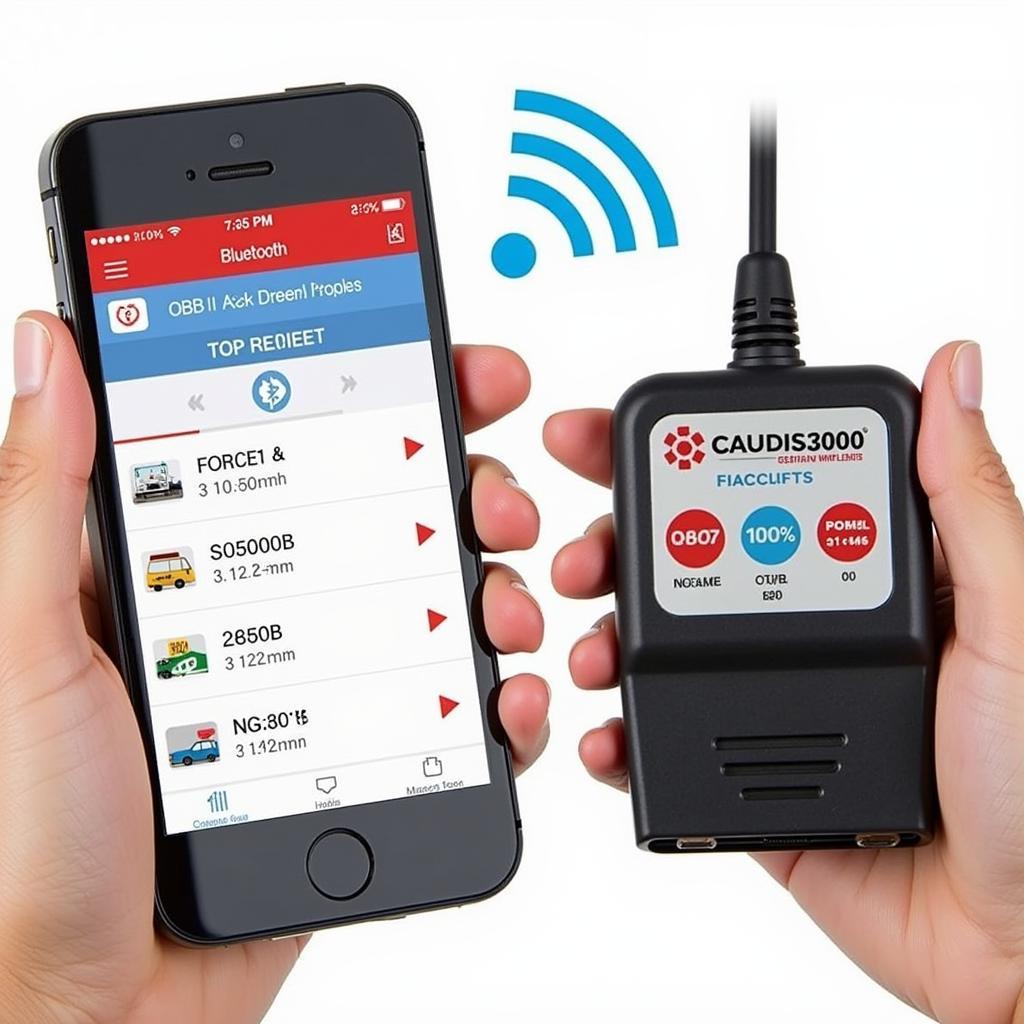Using a Bluetooth car diagnostic tool can empower you to understand your car’s health, potentially saving you time and money. These handy devices plug into your car’s OBD-II port and communicate wirelessly with your smartphone or tablet, providing valuable insights into your vehicle’s systems. This article will guide you through how to use a Bluetooth car diagnostic tool, from choosing the right one to interpreting the data.
Connecting your car to a diagnostic tool doesn’t have to be a daunting task. You can easily learn how to run diagnostics on car and take control of your vehicle’s maintenance. Find out where to plug in car diagnostic tool and start your journey towards better car care.
Choosing the Right Bluetooth Car Diagnostic Tool
Selecting the appropriate tool is the first step. Consider what features you need. Do you want to simply read and clear codes, or are you looking for more advanced functionalities like live data streaming and bi-directional controls? Research different brands and read reviews to see what other users recommend. You can find more information about choosing the right diagnostic tool by visiting our page on what is the best diagnostic car tool to buy. It’s important to choose a tool that’s compatible with both your vehicle and your smartphone’s operating system.
 Connecting a Bluetooth OBD-II Scanner to a Smartphone
Connecting a Bluetooth OBD-II Scanner to a Smartphone
Locating Your Car’s OBD-II Port
Most cars manufactured after 1996 have an OBD-II port, usually located under the dashboard on the driver’s side. Sometimes, it can be behind a panel or near the steering column. If you’re having trouble finding it, consult your car’s owner’s manual. For a comprehensive guide on locating the OBD-II port, you can refer to our article on where to plug in car diagnostic tool.
Pairing the Device with Your Smartphone
Once you’ve located the OBD-II port, plug the Bluetooth car diagnostic tool in. Then, turn on your car’s ignition (but don’t start the engine). Next, open the diagnostic app on your smartphone and follow the instructions to pair it with the tool via Bluetooth. The pairing process is usually straightforward and similar to connecting any other Bluetooth device.
Reading and Interpreting Diagnostic Trouble Codes (DTCs)
After a successful connection, you can start reading DTCs. These codes indicate potential problems within your car’s systems. The app will usually display the code along with a brief description. However, it’s essential to do further research to fully understand the code and its implications. Some apps offer more detailed explanations, while online resources can provide valuable insights. For a step-by-step guide on running diagnostics, see our article on run a diagnostic on car.
Clearing DTCs
After addressing the underlying issue related to a DTC, you can use the app to clear the code. This is important for resetting the check engine light and ensuring that the code doesn’t reappear unless the problem persists. However, remember, clearing the code doesn’t fix the problem – it only erases the code from the car’s computer.
Utilizing Live Data Streaming
Many Bluetooth car diagnostic tools offer live data streaming, which allows you to monitor various parameters in real-time, such as engine RPM, coolant temperature, and oxygen sensor readings. This feature can be invaluable for diagnosing intermittent problems or monitoring specific sensors. This is particularly useful for understanding how your car performs under different conditions. Learn more about using diagnostic apps on our page about the take a lot car diagnostic app.
Conclusion
Using a Bluetooth car diagnostic tool is a simple yet powerful way to understand your car’s health. By following these steps, you can take control of your vehicle’s maintenance and potentially save yourself from costly repairs. Remember to choose the right tool, understand the codes, and use the live data streaming feature to its full potential.
FAQ
- What is an OBD-II port?
- Are all Bluetooth car diagnostic tools the same?
- What does a DTC mean?
- Can I fix my car with a Bluetooth car diagnostic tool?
- What is live data streaming?
- Is it safe to use a Bluetooth car diagnostic tool?
- Where can I find more information about specific DTCs?
Common Situations and Questions:
- Check Engine Light On: This is the most common reason people use a diagnostic tool. It helps pinpoint the cause and determine the next steps.
- Unusual Car Behavior: If your car is acting strangely, a scan can reveal hidden issues not immediately apparent.
- Pre-Purchase Inspection: Before buying a used car, a diagnostic check can uncover potential problems and inform your decision.
Further Reading:
For more information on car diagnostics, check out our articles on:
Need more assistance? Contact us via WhatsApp: +1(641)206-8880, or Email: [email protected]. Our 24/7 customer service team is ready to help.


